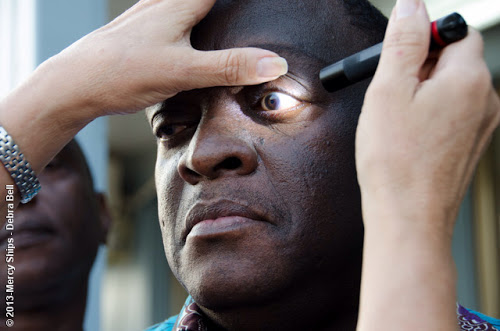Comprehending the Various Vision Improvement Procedures Available for Clearer Sight
In the world of vision adjustment procedures, a wide variety of choices exist to resolve refractive errors and provide individuals with more clear view. From the extensively recognized LASIK surgical procedure to less invasive treatments like PRK and implantable lenses, the field of ophthalmology provides a range of methods customized to fit different needs and choices. Each treatment features its own collection of factors to consider, advantages, and potential dangers. Comprehending the subtleties of these vision improvement methods is important for making informed decisions regarding one's aesthetic health. Let's discover the intricacies of these treatments and clarified the course to attaining boosted vision clearness.
LASIK Surgical Procedure
LASIK surgery is an usual refractive procedure used to fix vision troubles such as astigmatism, nearsightedness, and farsightedness. This surgical strategy, which stands for Laser-Assisted in Situ Keratomileusis, aims to improve the cornea to enhance exactly how light is concentrated on the retina, ultimately improving vision quality.
One of the primary benefits of LASIK surgical procedure is the fast enhancement in vision experienced by people. Generally, LASIK surgical procedure is a popular option for individuals looking for a long-term remedy for their vision troubles.
PRK Procedure

PRK is an appropriate option for individuals with slim corneas or those at a higher threat of eye injuries, as it does not include developing a corneal flap. The recuperation procedure for PRK is somewhat longer compared to LASIK, as the epithelium needs time to restore. Clients might experience discomfort and blurred vision for a few days adhering to the treatment.
In spite of the longer recovery time, PRK can generate outstanding cause vision renovation, making it an important choice for those that might not be appropriate candidates for LASIK surgery. - Andalusia Pediatrics
Implantable Lenses
As opposed to PRK where the cornea is reshaped straight, implantable lenses use another approach for dealing with vision by placing synthetic lenses inside the eye. This procedure is specifically helpful for individuals with high degrees of nearsightedness, farsightedness, or astigmatism who may not be appropriate prospects for laser surgical treatments like LASIK or PRK.
Implantable lenses, likewise understood as phakic intraocular lenses, job by supplementing the eye's all-natural lens with an artificial one. These lenses can be put before the all-natural lens (former chamber) or behind the iris and in front of the all-natural lens (posterior chamber) By readjusting the power and positioning of these lenses, eye doctors can successfully deal with refractive errors and boost visual skill.
One benefit of implantable lenses is that they are detachable and exchangeable, providing adaptability for future changes. As with any type of surgical procedure, there are dangers included, such as infection or cataract development. Clients considering implantable lenses ought to consult with an eye care professional to establish one of the most suitable option based on their specific demands and eye wellness.
Corneal Rings

The treatment for inserting corneal rings is minimally invasive and relatively quick, frequently executed as an outpatient procedure. During the surgical treatment, the eye Click This Link doctor makes a small cut in the cornea and inserts the rings at a specific depth. As soon as in position, the rings assist to improve the cornea, supplying a smoother surface area for light to get in the eye, which can cause clearer vision.
Corneal rings are thought about a reversible procedure, as they can be eliminated or replaced if necessary. While they may not totally get rid of the demand for glasses or call lenses, corneal rings can considerably improve vision top quality and total aesthetic convenience for individuals with keratoconus see here or other corneal abnormalities.
Refractive Lens Exchange
Adhering to the adjustment of corneal abnormalities with treatments like corneal rings, one more vision modification technique that can attend to refractive errors is Refractive Lens Exchange (RLE) RLE is an operation that involves changing the eye's natural lens with a synthetic intraocular lens (IOL) to deal with refractive mistakes such as farsightedness, presbyopia, and nearsightedness. This procedure is specifically useful for individuals who might not appropriate candidates for procedures like LASIK or PRK due to variables such as thin corneas or high refractive mistakes.
Recovery time for RLE is reasonably quick, and clients can expect improved vision quickly after the treatment. As with any surgical treatment, potential dangers and complications exist, so a thorough appointment with an eye care professional is essential to determine if RLE is the best vision adjustment option.
Conclusion

In the realm of vision adjustment procedures, a wide range of alternatives exist to address refractive errors and supply people with more clear view.LASIK surgery is a common refractive treatment made use of to correct vision issues such as nearsightedness, farsightedness, and astigmatism.While also a typical refractive procedure, the PRK (Photorefractive Keratectomy) strategy differs from LASIK surgical procedure in its technique to correcting vision troubles.Following the improvement of corneal irregularities with procedures like corneal rings, an additional vision correction technique that can resolve refractive errors is Refractive Lens Exchange (RLE) LASIK surgery, PRK treatment, implantable lenses, corneal rings, and refractive lens exchange are all choices that can attend to different vision problems.
Comments on “Eye Center Andalusia: State-of-the-Art Look After All Ages”